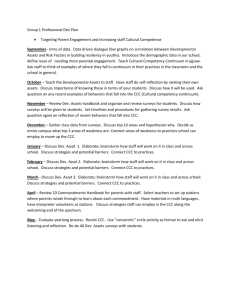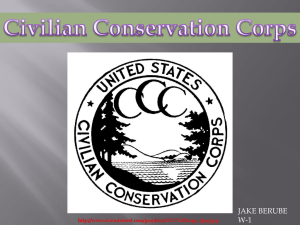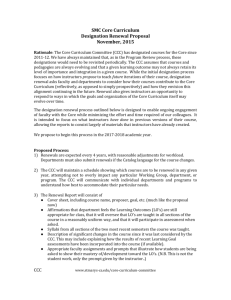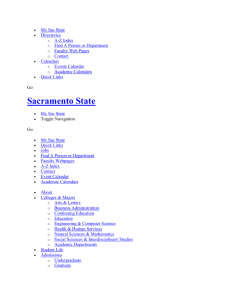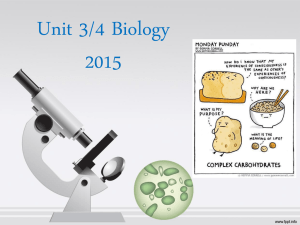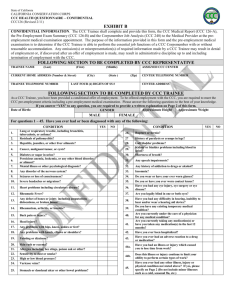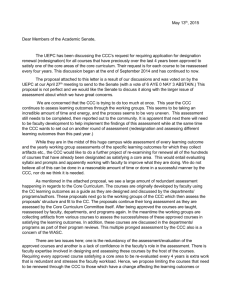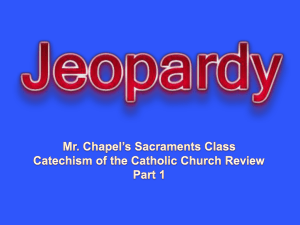Curriculum Leadership Institute (CLI)
advertisement
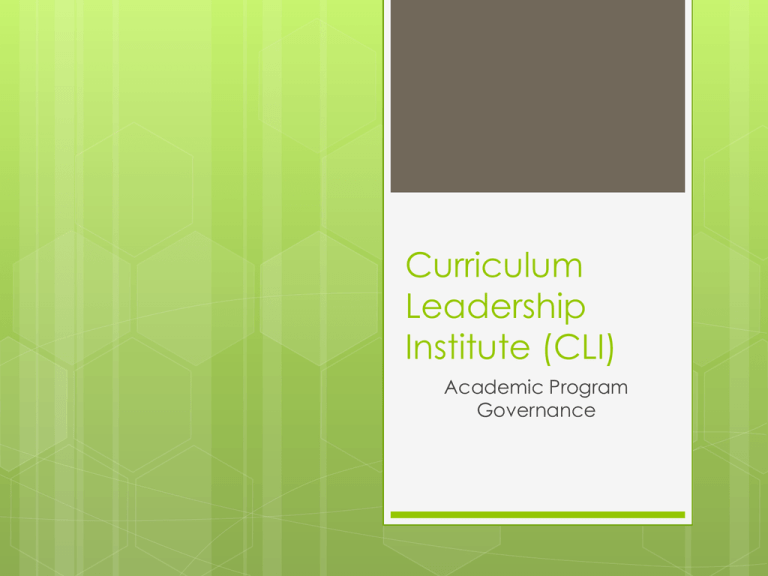
Curriculum Leadership Institute (CLI) Academic Program Governance Vocabulary Curriculum Leadership Institute (The CLI Model) Steering Committee Curriculum Coordinating Council (CCC) Subject Area Committees (SAC) Outcomes Components Curriculum Leadership Institute (The CLI Model) A management system for academic programs that includes a policy and a governance body Proven, step-by-step, processes for curriculum, instruction and assessment Based on 20 years of scientific research Steering Committee The governance body that creates a policy document that clarifies purposes, authority, and relationships The policy document is approved by the superintendent and BOE to become permanent policy for how curriculum is handled Chooses a Curriculum Coordinating Council (CCC) For the sake of time… Steering Committee = CCC In August of 2011, a lottery will be drawn for 1, 2, or 3 year seats Applications will need to be submitted for review to replace empty seats Curriculum Coordinating Council (CCC) Represents all District educators Will include a Board Member Will report to the Citizen’s Advisory Council (CAC) Develops a long range plan in 4 to 5 year cycles CCC - YEAR 1 Creates Math SAC Makes decisions regarding implementation requirements Begins discussions of mastery, grading, homework, report cards, and RtI Creates plan for extended learning outside the school day for both enrichment and additional learning support Makes decisions about assessments Initiates discussion and possible revision of mission statement; purpose statement…10 words or less CCC – Beyond Year 1 Meets monthly Incorporates the mission Integrates staff development Monitors progress of organization Facilitates implementation process with administrators Convert external pressure (something new from the State) into positive action Subject Area Committee (SAC) WHO Includes a CCC member One educator from each grade level and/or course K-12 16 educators will be selected for the first subject…math SAC Meeting Dates WHEN December15 January 26 February 17 and February 18 March 16 and March 17 April 27 and April 28 May 17 and May 18 YEAR 1 of MATH SAC Create a survey of the local curriculum Collect and organize the local curriculum Create “Wall Work” Conference with ALL teachers Identify gaps, repetitions, and common core Create the document CONTENT SAC = SCIENCE TEACHERS = ART Year 2 = Validation Year 3 = Resources and Assessment Year 4 = Assessment Validation What about… Transitional outcomes will be implemented the first year – the higher the grade level the increase in transitional outcomes This will be Board Policy – there are administrative ramifications when a teacher chooses not to teach the curriculum The policy is the thread that creates the continuum not the people Decisions will be made on homework policies and grading practices RtI – this is scientifically researched based Tier I core curriculum Yorkville Community Unit School District 115 LONG-RANGE PLAN (Approved 1/25/11) SUBJECTS 10-11 11-12 12-13 13-14 Mathematics C VC R/A VA C VC R/A (Reading) (Reading) (Reading) VC R/A VA (Other) (Other) (Other) English Language Arts and Literacy (Reading) C(Other) Abbreviations: Science C. Development of curriculum documents Social Studies VC. Implementation and validation of the new curriculum R. Resource selection A. Development of common outcome assessments VA. Implementation and validation of the new assessments C Drama/Theater 14-15 15-16 16-17 17-18 18-19 C VC R/A VA C VC R/A C VC VA VC R/A VA C VC R/A C VA C VC R/A VA C VC C VC R/A VA C VC C VC R/A VC R/A VA Health/Physical Education C VC R/A VA Business/FACS C VC R/A VA C VC R/A VA R/A VA Technology and Information Literacy C Music Art C Foreign Language Student Services (Career, College, Character) C VC VA C C C VC C VC R/A How do we, as YMS professional educators, continue to create change in our instruction to improve student learning through our PLCs while this District change takes place? Our Foundation is Set With Common Core We Build the Structure Using Curriculum Mapper We Frame the Structure With Instructional Strategies Similarities and differences Summarizing and note-taking Reinforcing effort and providing feedback Homework and practice Nonlinguistic representations Cooperative learning Setting objectives and providing feedback Generating and testing hypotheses Cues, questions, and advance organizers Always Asking Why… Why am I teaching this lesson? Why do I want my students to learn this lesson? Why are our students successful? Why are our students not successful? Why is this important to students right now? Who dares to teach must never cease to learn ~John Cotton Dana


